 W
WAffranchi is a former French legal term denoting a freedman or emancipated slave, but was a term used to refer pejoratively to mulattoes. It is used in the English language to describe the social class of freedmen in Saint-Domingue, and other slave-holding French territories, who held legal rights intermediate between those of free whites and enslaved Africans. In Saint-Domingue, roughly half of the affranchis were gens de couleur libres and the other half African slaves.
 W
WPablo Alí was a chief military commander of Haitian origin, who was in charge of the so-called Battalion 31 or Batallon de Morenos, freed slaves which joined the ranks of the Dominican army. Alí directed the battalion to participate in the Italian rebellion of 1810, during the government of Sánchez Ramírez. He was said to have been "most prominent, achieving great military distinction in Santo Domingo".
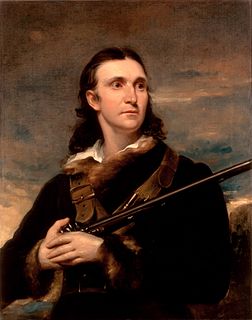 W
WJohn James Audubon was an American ornithologist, naturalist, and painter. His combined interests in art and ornithology turned into a plan to make a complete pictoral record of all the bird species of North America. He was notable for his extensive studies documenting all types of American birds and for his detailed illustrations that depicted the birds in their natural habitats. His major work, a color-plate book entitled The Birds of America (1827–1839), is considered one of the finest ornithological works ever completed. Audubon is also known for having identified 25 new species. He is the namesake of the National Audubon Society and his name adorns a large number of towns, neighborhoods, and streets in every part of the United States. Dozens of scientific names first published by Audubon are currently in use by the scientific community.
 W
WFrançois Barbé-Marbois, marquis de Barbé-Marbois was a French politician.
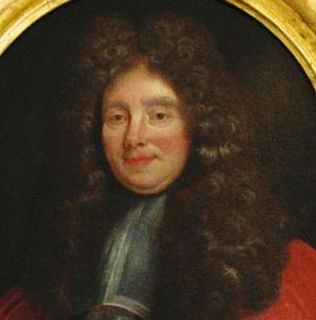 W
WMichel Bégon, known as Michel V Bégon or le Grand Bégon was a French ancien regime official. He was intendant de la marine at the port of Rochefort and intendant of the généralité of La Rochelle, as well as a passionate plant collector.
 W
WJean-Baptiste Belley was a native of Senegal and former slave from Saint-Domingue in the French West Indies who during the period of the French Revolution became a member of the National Convention and the Council of Five Hundred of France. He was also known as Mars.
 W
WThimoléone-Rose-Caroline Chevalier Lavit, known by her married name as Alexandrine-Caroline (or Caroline or simply Mme) Branchu was a French opera soprano of mixed race who was born in Cap-Français, Saint-Domingue the former French colony which is the modern-day Cap-Haïtien, Haiti. A gifted vocalist, for the better part of the first quarter of the 19th century, she was a leading soprano at the Paris Opéra.
 W
WÉtienne Eustache Bruix was a French Navy officer and admiral, and Minister of the Navy.
 W
WFerdinand François Désiré Budan de Boislaurent was a French amateur mathematician, best known for a tract, Nouvelle méthode pour la résolution des équations numériques, first published in Paris in 1807, but based on work from 1803.
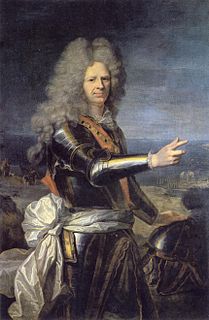 W
WJean-Baptiste du Casse was a French privateer, admiral, and colonial administrator who served throughout the Atlantic World during the 17th and 18th centuries. Likely born 2 August 1646 in Saubusse, near Pau (Béarn), to a Huguenot family, du Casse joined the French merchant marine and served in the East India Company and the slave-trading Compagnie du Sénégal. Later, he joined the French Navy and took part in several victorious expeditions during the War of the League of Augsburg in the West Indies and Spanish South America. During the War of the Spanish Succession, he participated in several key naval battles, including the Battle of Málaga and the siege of Barcelona. For his service, he was made a knight of the Order of the Golden Fleece by King Philip V of Spain. In the midst of these wars, he was Governor of the colony of Saint-Domingue from 1691-1703. He ended his military career at the rank of Lieutenant General of the naval forces and Commander of the Royal and Military Order of Saint Louis. He died on 25 June 1715 in Bourbon-l'Archambault, Auvergne.
 W
WMichel-Paul Guy de Chabanon was a violinist, composer, music theorist, and connoisseur of French literature. He was elected to the Académie des inscriptions et belles-lettres (1760) and the Académie française (1779).
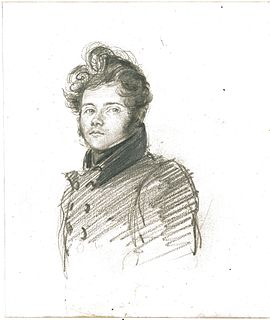 W
WBaron Charles Frédéric Chassériau was a French architect, who served as chief architect of the cities of Marseille, Constantine and Algiers.
 W
WJean-Baptiste Chavannes was a Haitian abolitionist and soldier.
 W
WAuguste Davezac was an American diplomat who served twice as United States Ambassador to the Netherlands.
 W
WRené Edward De Russy was an engineer, military educator, and career United States Army officer who was responsible for constructing many Eastern United States coastal fortifications, as well as some forts on the West Coast. He also served as superintendent of the United States Military Academy. He was promoted to brigadier general during the American Civil War.
 W
WJacquotte Delahaye, was a pirate active in the Caribbean sea. Alongside Anne Dieu-le-Veut, she was one of very few 17th-century female pirates. There is no evidence from period sources that Delahaye was a real person. Stories of her exploits are attributed to Leon Treich, a French fiction writer of the 1940s.
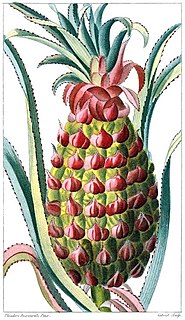 W
WMichel Étienne Descourtilz, was a French physician, botanist and historiographer of the Haitian Revolution. He was the father of illustrator Jean-Théodore Descourtilz, with whom he sometimes collaborated.
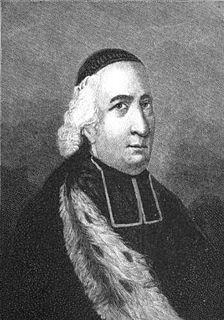 W
WLouis William Valentine Dubourg, SS was a Sulpician bishop of the Roman Catholic Church in the early years of the United States. He first served as apostolic administrator and later Bishop of Louisiana and the Two Floridas, and as Vicar Apostolic of Mississippi. He was later the Bishop of Montauban and then Archbishop of Besançon in France.
 W
WStephen Larigaudelle Dubuisson, S.J. was a French Catholic priest and member of the Society of Jesus.
 W
WThomas-Alexandre Dumas Davy de la Pailleterie was a French general in Revolutionary France. With Toussaint Louverture and Abram Petrovich Gannibal in Imperial Russia, Thomas-Alexandre Dumas stands as one of the highest-ranking men of African descent ever to lead a European army. He was the first person of color in the French military to become brigadier general, the first to become divisional general, and the first to become general-in-chief of a French army. Dumas and Toussaint Louverture were the two highest-ranking officers of sub-Saharan African descent in the Western world until 1975, when "Chappie" James achieved the equivalent rank of four-star general in the United States Air Force.
 W
WJean-Baptiste Dureau de la Malle was a writer of French literature and translator. He was made a member of the "Corps législatif" in 1802 and was admitted into the Académie française in 1804.
 W
WCécile Fatiman (1771-1883), was a Haitian vodou priestess, a mambo. She is famous for her participation in the vodou ceremony at Bois Caïman, which is considered to be one of the starting points of the Haitian Revolution.
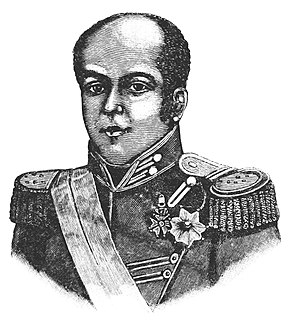 W
WEmperor Faustin-Élie Soulouque,Emperor of Hayti was a Haitian politician and military commander who served as President of Haiti from 1847 to 1849 and Emperor of Haiti from 1849 to 1859.
 W
WFrançois Fournier de Pescay, was a French physician and surgeon.
 W
WIn the context of the history of slavery in the Americas, free people of color were people of mixed African, European, and sometimes Native American descent who were not enslaved. They were a distinct group of free people of color in the French colonies, including Louisiana and in settlements on Caribbean islands, such as Saint-Domingue (Haiti), St. Lucia, Dominica, Guadeloupe, and Martinique. In these territories and major cities, particularly New Orleans, and those cities held by the Spanish, a substantial third class of primarily mixed-race, free people developed. These colonial societies classified mixed-race people in a variety of ways, generally related to visible features and to the proportion of African ancestry. Racial classifications were numerous in Latin America.
 W
WIn the context of the history of slavery in the Americas, free people of color were people of mixed African, European, and sometimes Native American descent who were not enslaved. They were a distinct group of free people of color in the French colonies, including Louisiana and in settlements on Caribbean islands, such as Saint-Domingue (Haiti), St. Lucia, Dominica, Guadeloupe, and Martinique. In these territories and major cities, particularly New Orleans, and those cities held by the Spanish, a substantial third class of primarily mixed-race, free people developed. These colonial societies classified mixed-race people in a variety of ways, generally related to visible features and to the proportion of African ancestry. Racial classifications were numerous in Latin America.
 W
WLaurens Cornelis Boudewijn de Graaf was a Dutch pirate, mercenary, and naval officer in the service of the French colony of Saint-Domingue during the late 17th and early 18th century.
 W
WPierre Le Grand was a French buccaneer of the 17th century. He is known to history only from one source, Alexandre Exquemelin's Buccaneers of America, and may be imaginary.
 W
WPierre Joseph Marie Granville, known as Jonathas Granville (1785–1839) was a Haitian educator, legal expert, soldier and a diplomat. He was born a free mulatto in Saint-Domingue. He was a musician and poet, skilled swordsman, an experienced diplomat, and civil servant. From about 1806 to 1815, Granville served under Napoleon as a junior officer during the emperor's campaigns in Germany, France, and Austria. After the Bourbon Restoration, he returned to Haiti with his mother and sisters where he quickly entered in the service of Alexandre Pétion's government. In 1824 he visited the United States, to promote the emigration of free Blacks to Haiti. At his return, in 1825, he established a private school, which will become known as the Granville Institute, before being asked to lead the National Lycee in Port-au-Prince. He is considered to be the intellectual father of the 1843 Revolution that finally dislodged Jean-Pierre Boyer's authoritarian regime. Granville was regarded as well-educated and refined, a man of knowledge and virtue. He made popular in the U.S. the Persian saying, "I write insults on sand and favours on marble."
 W
WAlexandre Francois Auguste de Grasse, known as Auguste de Grasse and Comte de Grasse-Tilly, was a French career army officer. He was assigned to the French colony of Saint-Domingue in 1789, where he married in Cap Français, and acquired a plantation and 200 slaves before the Haitian Revolution. Following the Royal Navy's defeat of the French fleet in Saint-Domingue in 1793, de Grasse was allowed to resign his commission and leave with his family and in-laws for Charleston, South Carolina.
 W
WJean-Joseph, marquis de Laborde was a French businessman, fermier général and banker to the king, who turned politician. A liberal, he was guillotined in the French Revolution.
 W
WJean Lafitte was a French pirate and privateer who operated in the Gulf of Mexico in the early 19th century. He and his older brother Pierre spelled their last name Laffite, but English language documents of the time used "Lafitte". This has become the common spelling in the United States, including places named after him.
 W
WFrançois Mackandal was a Haitian Maroon leader in Haiti. He is sometimes described as a Haitian vodou priest, or houngan. For joining Maroons to kill whites in Saint Domingue, he was captured and burned alive by French colonial authorities.
 W
WEdward Mansvelt or Mansfield was a 17th-century Dutch corsair and buccaneer who, at one time, was acknowledged as an informal chieftain of the "Brethren of the Coast". He was the first to organise large scale raids against Spanish settlements, tactics which would be utilised to attack Spanish strongholds by later buccaneers in future years, and held considerable influence in Tortuga and Port Royal. He was widely considered one of the finest buccaneers of his day and, following his death, his position was assumed by his protégé and vice-admiral, Henry Morgan.
 W
WMarabou is a term of Haitian origin denoting multiracial admixture. The term, which comes originally from the African Marabouts, describes the offspring of a Haitian person of mixed race: European, African, Taíno and South Asian.
 W
WMaroons are descendants of Africans in the Americas who formed settlements away from slavery. They often mixed with indigenous peoples, eventually evolving into separate creole cultures such as the Garifuna and the Mascogos.
 W
WÉtienne Victor Mentor was a politician from Martinique who served and represented Saint-Domingue in the French parliament from 1797-1799.
 W
WJean-Louis Michel (1785–1865) was a fencing master, sometimes hailed as the foremost exponent of the art of fencing in the nineteenth century.
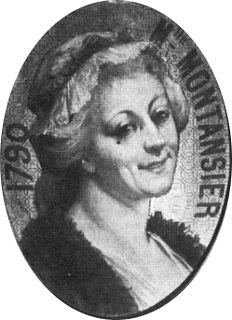 W
WMarguerite Brunet, known by her stage name of Mademoiselle Montansier, was a French actress and theatre director.
 W
WMédéric Louis Élie Moreau de Saint-Méry, son of Bertrand-Médéric and Marie-Rose Moreau de Saint-Méry, was born in Fort-Royale, Martinique He was a lawyer and writer with a career in public office in France, Martinique, and Saint-Domingue. He is best known for his publications on Saint Domingue and Martinique. He married into a well-positioned family which allowed him to expand his connections among French people and in time, positioned himself as a member of the Parliament of France. Moreau was deeply involved in the founding of the Museum of Paris which he was later appointed president of in 1787
 W
WVincent Ogé was a French aristocrat of mixed descent who instigated a rebellion against white colonial authority in French Saint-Domingue that lasted from October to December 1790 in the area outside Cap-Français, the colony's main city. The Ogé revolt of 1790 foretold the massive slave uprising of August 1791 that eventually led to the Haitian Revolution.
 W
WJean-David Nau, better known as François l'Olonnais, was a French pirate active in the Caribbean during the 1660s.
 W
WAlexandre Sabès Pétion was the first President of the Republic of Haiti from 1807 until his death in 1818. He is acknowledged as one of Haiti's founding fathers; a member of the revolutionary quartet that also includes Toussaint Louverture, Jean-Jacques Dessalines, and his later rival Henri Christophe. Regarded as an excellent artilleryman in his early adulthood, Pétion would distinguish himself as an esteemed military commander with experience leading both French and Haitian troops. The 1802 coalition formed by he and Dessalines against French forces led by Charles Leclerc would prove to be a watershed moment in the decade-long conflict, eventually culminating in the decisive Haitian victory at the Battle of Vertières in 1803.
 W
WPierre le Picard (1624–1690?) was a 17th-century French buccaneer. He was both an officer to l'Olonnais as well as Sir Henry Morgan, most notably taking part in his raids at Maracaibo and Panama, and may have been one of the first buccaneers to raid shipping on both the Caribbean and Pacific coasts.
 W
WLewis Scot was an English buccaneer who, according to writer Alexander Esquemeling, was the first Englishman to raid Spanish coastal settlements in the Caribbean and West Indies during the mid-seventeenth century.
 W
WLéger-Félicité Sonthonax was a French abolitionist and Jacobin before joining the Girondist party, which emerged in 1791. During the French Revolution, he controlled 7,000 French troops in Saint-Domingue during part of the Haitian Revolution. His official title was Civil Commissioner. From September 1792 to December 1795, he was the de facto ruler of Saint-Domingue's non-slave populace. Within a year of his appointment, his powers were considerably expanded by the Committee of Public Safety. He was recalled in 1795 largely due to the resurgence of conservative politics in France. Sonthonax believed that Saint-Domingue's whites were royalists or separatists, so he attacked the military power of the white settlers and by doing so alienated the colonial settlers from their government. Many gens de couleur asserted that they could form the military backbone of Saint-Domingue if they were given rights, but Sonthonax rejected this view as outdated in the wake of the August 1791 slave uprising. He believed that Saint-Domingue would need ex-slave soldiers among the ranks of the colonial army if it was to survive. On August 1793, he proclaimed freedom for all slaves in the north province. His critics allege that he was forced into ending slavery in order to maintain his own power.
 W
WJacque Alexander Tardy better known as "Tardy the Pirate", was an unsuccessful and atypical pirate who usually poisoned his victims. Most known for his last act of piracy of the brig Crawford. He wore a blue velvet frock coat, carried a cane and was small of stature with fine features and a dark complexion. At the time of his death he had grey hair and wore dentures.
 W
WNicolas-Joseph Thiéry de Menonville, avocat at the Parlement of Paris, was a French botanist who volunteered to be sent to Mexico in 1776 to steal the cochineal insect valued for its scarlet dye. In his clandestine bioprospecting piracy, he worked without official papers and would have been ruthlessly treated had he been caught. He succeeded in naturalizing the insect and the prickly pear (Opuntia) "nopal" cactus on which it depended in the French colony of Saint-Domingue.
 W
WVincent-Marie Viénot de Vaublanc baron of the Empire as known as "count de Vaublanc" ' was a French royalist politician, writer and artist. He was a deputy for the Seine-et-Marne département in the French Legislative Assembly, served as President of the same body, and from 26 September 1815 to 7 May 1816, he was the French Minister of the Interior.
 W
WJoseph Hyacinthe François de Paule de Rigaud, comte de Vaudreuil was a French nobleman at the court of King Louis XVI of France. He was the alleged lover of Gabrielle de Polastron, duchesse de Polignac, the favourite of Marie Antoinette and over whom he exerted a powerful influence.
 W
WMoïse Vauquelin or Moses Vanclein was a 17th-century French buccaneer. During his four-year career as a pirate, he served as an officer under l'Ollonais and formed a brief partnership with Pierre Le Picard. He and Philippe Bequel later co-wrote a book detailing their explorations of the Honduran and Yucatán coastline.
 W
WElisabeth Dieudonné Vincent was a Haitian-born free woman of color, businesswoman and international migrant. Born in 1798 in Saint-Domingue to a former slave and French father, she was illegitimate, although her father acknowledged her. In 1803, the family fled from the violence of the Haitian Revolution to Santiago de Cuba, where they completed paperwork to show that they were free. In 1809, when the Spanish authorities expelled French colonists because of the Peninsular War in Europe, she moved to New Orleans in the Antebellum South.
 W
WWhite Haitians also known as Euro-Haitians are Haitians of predominantly European and in some cases Levantine descent.
 W
WJean-Baptiste Philibert Willaumez was a French sailor, Navy officer, and admiral of the First French Empire.
 W
WDominique You or Youx was a privateer, soldier, and politician.